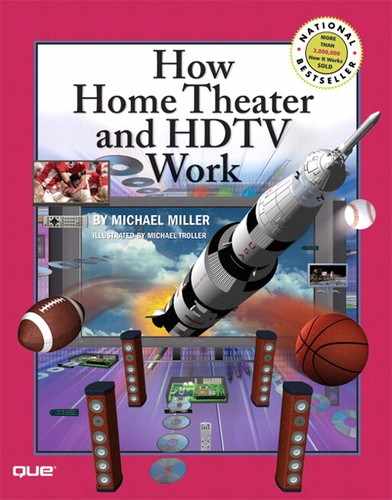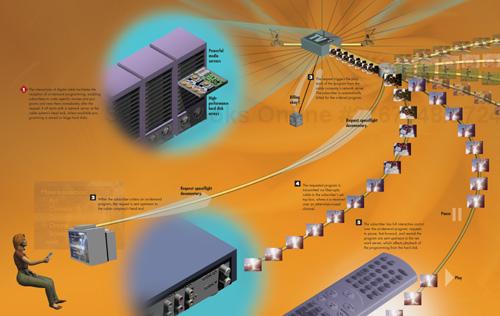
Cable television was first developed for entirely practical reasons. Many rural viewers were located too far away from the big–city transmitting antennas and couldn’t receive the signals of many (if any) major television stations. Cable was used to transmit these far–away television stations to rural customers.
The first cable network was established in 1948, when remote Pennsylvanians solved their reception problems by putting antennas on hills and running cables to their houses in the valleys. In the 1950s, rural cable systems began using microwave transmitting and receiving towers to capture even more distant signals. This made television available to people who lived outside the range of standard broadcasts—and, in some instances, gave cable customers access to several broadcast stations of the same national network.
By the early 1970s, many cable operators began offering additional channels, obtained from satellite broadcasters. Some of these channels, such as Atlanta’s WTBS and Chicago’s WGN, were simply local channels from elsewhere in the country. Other, more targeted, channels were developed specifically for the cable market. These new cable channels included the Cable News Network (CNN) and Home Box Office (HBO), the latter of which was the first “pay” channel.
Today, cable systems deliver hundreds of channels to more than 60 million American homes. Cable service is typically offered in differently priced tiers: The basic tier typically offers local stations, while subsequent tiers offer more focused programming and various pay channels. Many cable companies also offer on–demand programming, which enables the viewer to order up a menu of movies and other programs for a one–time viewing fee.
Whereas normal broadcast television signals travel through the air at a speed very close to the speed of light, cable signals are transmitted over a coaxial cable at about two thirds the speed of light. Newer cable systems transmit over longer distances via fiber–optic cable, and many cable services use encoded digital signals that let them offer more channels over the same bandwidth. Early cable systems operated with 200MHz of bandwidth, which enabled the transmission of just 33 channels. Today’s systems use up to 550MHz of bandwidth, which—combined with digital encoding—enables the transmission of hundreds of channels.




